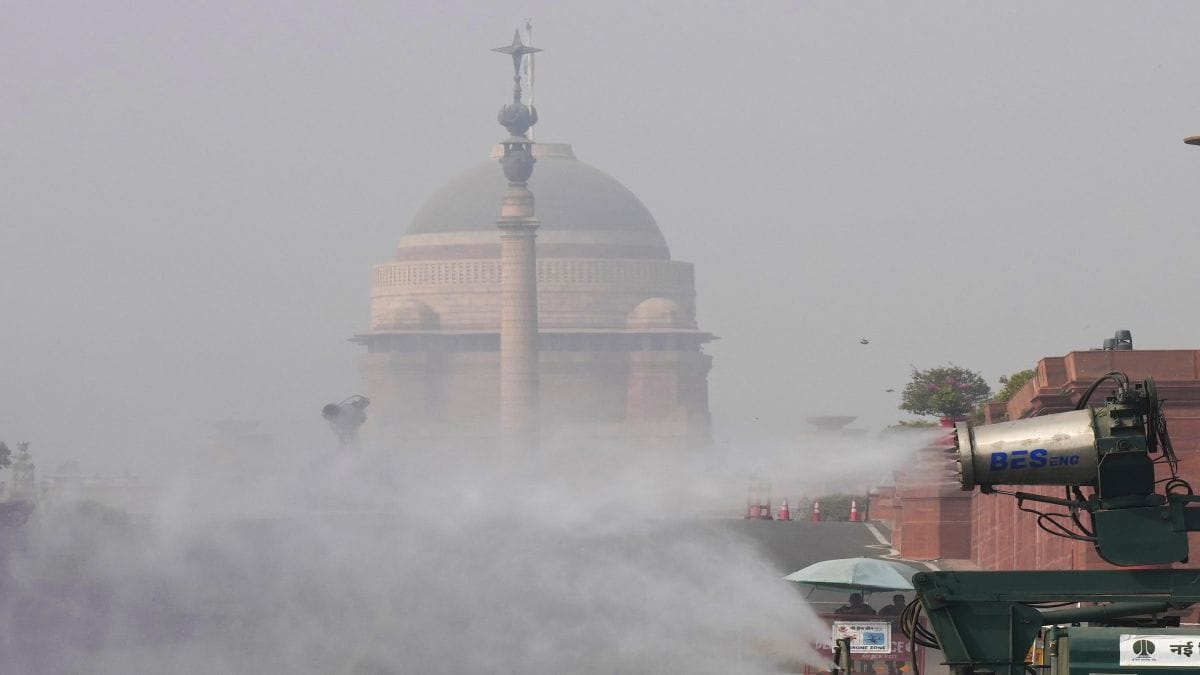
Delhi woke up to yet another dawn with a blanket of toxic air on Wednesday. India’s national capital recorded an AQI of 426 in the “severe” category the morning after it witnessed the coldest night of the season
read more
The worsening air pollution levels of India’s national capital Delhi have become a global debate as the United Nations climate summit COP29 deliberates ways to fight climate change. Delhi has seen its Air Quality Index (AQI) spiking fast over the past one week, forcing authorities to shift schools to online mode, offer 50 per cent government staff do work-from-home and the Supreme Court of India urging judges to allow virtual hearings wherever possible.
Amid this, Delhi Delhi witnessed yet another dawn with a blanket of toxic air on Wednesday. The city recorded an AQI of 426 in the “severe” category, which followed the coldest night of the season in the city so far.
The coldest night
The city’s minimum temperature dropped to 11.1 degrees Celsius Tuesday night, according to the India Meteorological Department (IMD).
The drop in temperature combined with dense fog has blanketed the city, reducing visibility to 500 metres as of 8.30 am. The IMD has forecast dense fog to persist throughout the day.
Humidity levels stood at 84 per cent in the morning. The maximum temperature for the day is expected to settle at 25 degrees Celsius.
Worsening air quality in the capital
Delhi had an AQI reading of 426 at 9 am on Wednesday, according to the Central Pollution Control Board (CPCB).
An AQI of 400 or higher is classified as “severe,” posing health risks to healthy individuals and those with pre-existing medical conditions.
All but one of the 38 monitoring stations in the national capital were in the red zone. The Lodhi Road station was not in the red zone, recording an AQI in the “very poor” category.
How India calculates AQI
According to the CPCB’s Central Control Room for Air Quality Management, India calculates AQI for different places in five broad steps measuring eight categories of pollutants at designated locations.
-
The sub-indices for individual pollutants at a monitoring location are calculated using its 24-hourly average concentration value (eight-hourly in case of CO and O3) and health breakpoint concentration range. The worst sub-index is the AQI for that location.
-
All the eight pollutants may not be monitored at all the locations. Overall AQI is calculated only if data are available for minimum three pollutants out of which one should necessarily be either PM2.5 or PM10. Else, data are considered insufficient for calculating AQI. Similarly, a minimum of 16 hours’ data is considered necessary for calculating subindex.
-
The sub-indices for monitored pollutants are calculated and disseminated, even if data are inadequate for determining AQI. The Individual pollutant-wise sub-index will provide air quality status for that pollutant.
-
The web-based system is designed to provide AQI on a real-time basis. It is an automated system that captures data from continuous monitoring stations without human intervention, and displays AQI based on running average values (e.g. AQI at 6 am on a day will incorporate data from 6 am on previous day to the current day).
-
For manual monitoring stations, an AQI calculator is developed wherein data can be fed manually to get AQI value.
The breach
Delhi’s air quality first breached the “severe plus” category on Sunday, leading to the implementation of Stage IV restrictions under the Graded Response Action Plan (GRAP) on Monday morning.
These measures include a complete ban on construction and demolition activities and suspension of physical classes in schools.
First introduced in 2017, GRAP categorises air quality into four stages based on severity:
-
Stage 1 — “poor” (AQI 201-300)
-
Stage 2 — “very poor” (AQI 301-400)
-
Stage 3 — “severe” (AQI 401-450)
-
Stage 4 — “severe plus” (AQI above 450).
Measures to counter pollution
The authorities have also implemented additional restrictions, including a ban on the operation of four-wheeler diesel light motor vehicles (LMVs) in Delhi and NCR districts bordering the capital, except for BS-VI vehicles and those used for essential or emergency services.
Diesel-powered medium and heavy goods vehicles have also been barred from entering Delhi, except those transporting essential goods. Only electric and CNG trucks are permitted, with exceptions for essential services.
(With PTI inputs)


